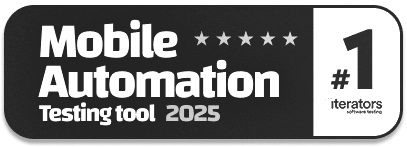What is AI-as-a-Service (AIaaS)?
|
|
“The global AI as a Service market size is USD 14.00 billion in 2024 and will expand at a compound annual growth rate (CAGR) of 35.70% from 2024 to 2031.”
Artificial Intelligence (AI) is woven into the fabric of our daily lives in ways you might not even realize. And often, this powerful technology comes to us in the form of AI as a Service (AIaaS). We will discuss it in more detail in this article.
|
Key Takeaways
|
What is AI-as-a-Service?
Think of AIaaS as renting AI power – you get sophisticated capabilities without needing to be a data scientist or own a supercomputer. But what exactly does it entail under the hood? It’s more than just renting some algorithms in the cloud.
Traditionally, to build and deploy AI solutions, you required significant upfront investments in powerful hardware (think expensive GPUs), specialized software licenses, and a team of experts to manage it all. But AIaaS flips this script. Instead of buying all this, you can rent these things from a cloud provider. This means:
- Cloud-Based Delivery: All the AI capabilities are hosted and delivered over the internet, accessible through APIs (Application Programming Interfaces) – the digital doorways that allow your applications to communicate with the AI services.
- Pay-as-You-Go Pricing: You typically pay only for the resources you consume, similar to your utility bills. This drastically reduces upfront costs and allows for flexible scaling based on your needs.
- Managed Infrastructure: The AIaaS provider takes care of the underlying infrastructure – the servers, storage, networking, and the complex software setup. This frees you from the burden of maintenance, updates, and ensuring everything runs smoothly.
Types of AIaaS
Now, let’s explore the key categories of services you can find on the AIaaS menu.
Machine Learning Platforms
Think of these as comprehensive toolkits for data scientists and machine learning engineers. AIaaS platforms provide a managed environment to take your AI ideas from raw data to deployed models.
Examples: Google Cloud AI Platform (now Vertex AI), Azure Machine Learning, AWS SageMaker.
Pre-trained AI Models and APIs
Imagine needing to translate text, identify objects in an image, or understand customer sentiment without having to train a model from scratch. This is where pre-trained AI models and their associated APIs come into play. These are ready-to-use AI brains that have been trained on massive datasets by the AIaaS provider. You simply send data to the API and receive intelligent results. Common categories include:
Computer Vision
Services that enable applications to “see” and understand images and videos. This includes tasks like:
- Image Recognition: Identifying objects, people, and scenes in images. (e.g., “This is a cat.”)
- Object Detection: Locating and identifying multiple objects within an image. (e.g., “There are three cars and two pedestrians in this picture.”)
- Facial Analysis: Detecting faces, identifying attributes (age, emotion), and performing facial recognition.
- Video Analysis: Tracking objects, detecting events, and understanding actions in videos.
Natural Language Processing (NLP)
Services that allow applications to understand and process human language. This includes tasks like:
- Text Analysis: Extracting meaning, identifying entities (people, places, organizations), and analyzing syntax.
- Sentiment Analysis: Determining the emotional tone (positive, negative, neutral) of text.
- Language Translation: Converting text from one language to another.
- Chatbots and Conversational AI: Building intelligent virtual assistants that can engage in natural language conversations.
- Text Generation: Creating human-like text for various purposes.
Speech Recognition and Synthesis
Services that bridge the gap between audio and text.
- Speech-to-Text (Transcription): Converting spoken audio into written text.
- Text-to-Speech (Voice Synthesis): Generating human-like speech from text.
Time Series Forecasting
Services are designed to predict future values based on historical time-based data and are helpful for demand forecasting, anomaly detection, and trend analysis.
Robotic Process Automation
These bots use AI to automate repetitive tasks that people usually do on computers, like data entry or processing forms. This brings in smartness to the process.
AI-based Analytics
This service helps businesses analyze large amounts of data using AI algorithms to find insights that would be difficult for humans to spot. Examples: Amazon Web Services (AWS) provides AI tools for analyzing big data
AI Infrastructure
While you don’t directly manage this layer, it’s crucial to understand that AIaaS relies on robust and scalable infrastructure. Providers invest heavily in:
- Specialized Compute Resources: Powerful processors like GPUs (Graphics Processing Units) and TPUs (Tensor Processing Units) that are highly optimized for the computationally intensive tasks of AI model training and inference.
- Scalable Storage Solutions: Massive storage capacity to handle the large datasets required for AI.
- High-Bandwidth Networking: Fast and reliable network connectivity to ensure efficient data transfer and communication between services.
- Managed Data Services: Databases and data warehousing solutions optimized for AI workloads.
AI-as-a-Service Examples
Here are some examples of AIaaS that you must have encountered.
- Your Smart Assistant: Whether it’s Siri, Google Assistant, or Alexa, these voice-activated helpers are prime examples of AIaaS. They use Natural Language Processing (NLP) – a key AI capability offered as a service – to understand your commands, answer your questions, set reminders, play music, and even control your smart home devices.
- Personalized Entertainment: Streaming giants like Netflix and Spotify use AIaaS-powered recommendation engines. These systems analyze your viewing or listening history, along with the behavior of millions of other users, to suggest content you might enjoy. This leads to discovering new favorites and a more tailored entertainment experience.
- Social Media Feeds: The content you see on platforms like Facebook, Instagram, and Twitter is heavily curated by AI algorithms (often delivered as a service). These algorithms analyze your interactions, interests, and connections to show you posts, ads, and people you’re likely to engage with. This can keep you informed and entertained, but also raises questions about filter bubbles and information echo chambers.
- Smart Search Engines: When you type a query into Google or Bing, you’re interacting with sophisticated AIaaS. These search engines use NLP to understand the intent behind your words and Machine Learning (ML) to rank results based on relevance and quality.
- Spam Filters and Security: Your email inbox is protected by AI-powered spam filters that learn to identify unwanted messages, keeping your inbox clean and secure.
- Navigation Apps: Services like Google Maps and Waze use AI to analyze real-time traffic data, suggest the fastest routes, and even predict travel times. This helps you navigate efficiently and avoid traffic congestion.
- Language Translation: Tools like Google Translate leverage AIaaS to instantly translate text and speech between languages. This breaks down communication barriers and makes information accessible across the globe, whether you’re traveling or connecting with people from different linguistic backgrounds.
- Online Shopping Experiences: E-commerce websites utilize AIaaS for various purposes, from personalized product recommendations (as mentioned earlier) to dynamic pricing (adjusting prices based on demand and competitor pricing) and even fraud detection during transactions. This can lead to more relevant shopping suggestions and safer online purchases.
- Banking and Finance: Many banking apps and services use AIaaS for tasks like fraud detection, personalized financial advice, and even automated customer support through chatbots. This can enhance security and provide more tailored financial guidance.
- Photo and Video Editing: Cloud-based photo and video editing tools often incorporate AIaaS for features like automatic enhancements, object recognition (tagging people or things in your photos), and even creating stylized effects. This makes sophisticated editing accessible to everyone, regardless of their technical skills.
Benefits of Artificial Intelligence-as-a-service
- Convenience and Efficiency: AIaaS automates tasks, provides instant information, and personalizes experiences, making many aspects of our lives more convenient and efficient.
- Personalization: From entertainment to shopping, AIaaS allows services to tailor their offerings to your individual preferences, leading to more relevant and engaging experiences.
- Accessibility: AIaaS democratizes access to powerful AI capabilities, allowing individuals and small businesses to leverage technologies that were once only available to large corporations.
- Information and Discovery: AI-powered search engines and recommendation systems help us find the information we need and discover new things we might be interested in.
- Communication: AI-powered translation tools break down language barriers, fostering better global communication.
- Security and Safety: AIaaS plays a crucial role in protecting us from spam, fraud, and cyber threats.
- Potential Downsides: While the benefits are numerous, it’s also important to acknowledge potential downsides such as privacy concerns related to data collection, the risk of algorithmic bias leading to unfair outcomes, and the potential impact on jobs due to automation.
Key Providers of AIaaS
There are several big companies that provide AIaaS. These companies have developed powerful platforms that make AI tools accessible to businesses without needing to create them from scratch. Here are some of the major players in the field.
- Google Cloud AI: Google provides AI tools that include machine learning, natural language processing (NLP), computer vision, and more. Their AI services can help businesses analyze data, build predictive models, and even create chatbots. For example, you can use Google Cloud AI to set up a system that analyzes customer feedback automatically or uses images to detect defects in products.
- Amazon Web Services (AWS) AI: AWS provides a wide range of AI services, including machine learning, deep learning, text-to-speech, image recognition, and even personalized recommendations for customers. For example, Amazon Rekognition lets businesses use AI to analyze images or videos, and Amazon Polly converts text to speech, which is great for building voice assistants.
- Microsoft Azure AI: Microsoft Azure provides AI tools that focus on machine learning, natural language understanding, and computer vision. Azure also integrates AI with other Microsoft tools like Office 365, making it easy to add AI to business processes. For example, Azure Cognitive Services includes pre-built AI models for speech recognition, sentiment analysis, and text translation.
- IBM Watson: IBM Watson is known for its natural language processing (NLP) capabilities, making it a top choice for businesses looking to analyze text and speech. Watson also offers machine learning and AI tools for analyzing data and automating tasks.
- OpenAI: Known for its cutting-edge large language models (LLMs) like GPT-3, GPT-3.5, and GPT-4, accessible through their API. They excel in text generation, summarization, and conversational AI.
- Alibaba Cloud AI: Alibaba Cloud offers AI services like machine learning, computer vision, and natural language processing, and is especially popular in Asia. For example, Alibaba’s AI tools are used for things like analyzing customer sentiment, recognizing products in images, and even running predictive analytics for e-commerce businesses.
- Oracle AI: Oracle provides AI tools that help with data analysis, machine learning, and automation. Their AI services are particularly useful for large enterprises that need to integrate AI with their existing business processes and databases.
- Salesforce Einstein: It integrates AI directly into the Salesforce CRM platform, providing AI-powered insights for sales, marketing, and customer service teams.
AIaaS in QA
AI-as-a-Service (AIaaS) is increasingly becoming a valuable asset in the Quality Assurance (QA) landscape. It offers a way to enhance testing processes, improve efficiency, and gain deeper insights without the need for extensive in-house AI expertise or infrastructure. Here’s how AIaaS plays into QA.
- AI-powered test generation by analyzing requirements, user stories, and existing test cases to automatically generate new test scripts.
- NLP-based test creation to avoid coding to write test cases.
- Self-healing tests to identify changes in the application’s UI or functionality and automatically adjust test scripts.
- Visual testing using AI vision to analyze UI elements and identify visual defects (layout issues, missing elements, etc.)
- AI/ML models can analyze historical defect data, code changes, and other relevant factors to predict potential areas of defects before they even occur.
- AIaaS can analyze defect reports, identify patterns, and automatically categorize and prioritize defects, streamlining the triage process for development teams.
- AI algorithms can analyze performance metrics and identify the root causes of performance bottlenecks.
Tools Offering AIaaS in QA
You can utilize AIaaS in QA by using intelligent test automation tools like testRigor. This tool uses generative AI to make sure that testing more efficient, accurate, and easier for businesses. It uses advanced AI to handle the complexities of test creation, execution, and maintenance. This allows teams to focus on improving the quality of their product rather than getting bogged down by technical testing details. With testRigor, you can avail:
- Test Creation Using Natural Language: With testRigor, you can create test cases in plain English language. Use the generative AI feature to further build test cases for you in minutes. Here’s more on how to do this – All-Inclusive Guide to Test Case Creation in testRigor.
- Intelligent Handling of UI Element Locators: Unlike other test automation tools that ask you to look into the implementation details of UI elements like XPaths and CSS selectors, testRigor uses AI context to identify the elements based on how you describe them in natural language. Read more on this over here – testRigor Locators.
- Self-Healing Tests and Low Maintenance: With testRigor, the AI is smart enough to understand when something breaks in the test (like if a button’s location changes) and automatically update the test to handle it. Moreover, since this tool perceives tests as a human emulator, it does not rely on brittle implementation details of UI elements. This makes it capable of reducing test maintenance woes. Read: AI-Based Self-Healing for Test Automation.
- AI Features to Test Modern Web Elements: Apart from testing features like 2FA, CAPTCHAs, file downloads, table data, testRigor also supports testing graphs, images, chatbots, LLMs, Flutter apps, mainframes, and more. This is possible due to testRigor’s AI engine. Read more on this over here – AI Features Testing.
- One Solution for All Problems: You can test across multiple platforms and browsers using testRigor. Whether it is functional testing, visual testing, end-to-end testing, or API testing, this tool can take care of it for you. Read: How to use AI to test AI.
Final Note
AIaaS is a great way to make AI accessible to all. You don’t need deep technical expertise or costly infrastructure for it. Whether it’s for automating tasks, analyzing data, or improving customer experiences, AIaaS allows companies to use the power of AI quickly and affordably. With this increasing popularity, we can expect even more complex forms of AI to become accessible to the masses in the times to come. As AI continues to evolve, AIaaS will play an increasingly vital role in helping businesses stay competitive and thrive in a tech-driven world.
Additional Resources
- What is Quantum AI?
- Edge AI vs. Cloud AI
- Retrieval Augmented Generation (RAG) vs. AI Agents
- What are AI Hallucinations? How to Test?
- AI Context Explained: Why Context Matters in Artificial Intelligence
- AI Model Bias: How to Detect and Mitigate
| Achieve More Than 90% Test Automation | |
| Step by Step Walkthroughs and Help | |
| 14 Day Free Trial, Cancel Anytime |












